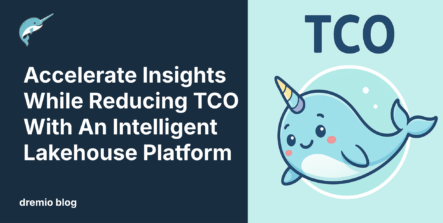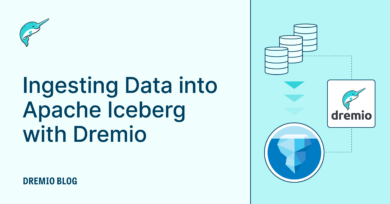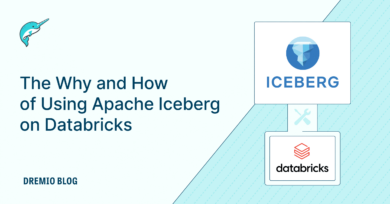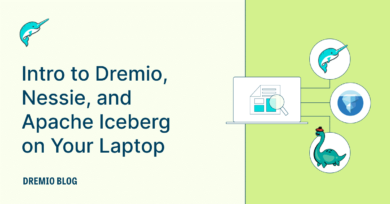5 minute read · April 23, 2025
Accelerate Insights While Reducing TCO with An Intelligent Lakehouse Platform
· Principal Product Marketing Manager

Enterprises today face increasing pressure to extract insights from data quickly while controlling spend. Yet, as data volumes explode across cloud and on-prem environments, traditional architectures often fall short—resulting in higher costs, rigid pipelines, and slower decision-making. The Dremio Intelligent Lakehouse Platform addresses these challenges by delivering faster insights and significant total cost of ownership (TCO) savings through open standards, minimal data movement, and a high-performance self-service experience.
1. Eliminating the Cost Burden of ETL
Legacy data platforms rely heavily on ETL processes to prepare and move data across systems—creating complex, resource-intensive pipelines. Every replication or transformation of data adds cost in compute, storage, and engineering effort.
Dremio avoids these inefficiencies by allowing data to stay where it is—whether in the cloud or on-premises. With native support for querying data directly in data lakes and other sources, Dremio eliminates the need for costly data duplication or movement into proprietary warehouses. This approach dramatically cuts operational overhead and accelerates the path from raw data to actionable insights.
2. Unlocking Faster Time to Insight with Superior Performance
In a data-driven world, the speed of insight can make or break competitive advantage. However, traditional systems often falter under the weight of large, distributed datasets.
Dremio's lakehouse delivers a lightning-fast SQL engine with built-in autonomous acceleration—empowering users to run complex queries on massive datasets with sub-second response times. Analysts and data teams can move from data ingestion to business value rapidly, driving real-time decision-making at scale without sacrificing performance.
3. Lowering Management Overhead with a Simplified Architecture
Managing sprawling data infrastructure can strain resources. Legacy systems and data warehouses demand extensive IT involvement for integration, maintenance, and governance—often coupled with expensive licensing costs.
Dremio simplifies this by unifying data under a single architecture, supporting direct access and analysis without data duplication. Features such as automatic compaction, and garbage collection, Iceberg clustering, powered by Dremio’s Enterprise Catalog (built on Apache Polaris), reduce administrative effort and infrastructure sprawl—ultimately lowering management costs and resource dependency.
4. Enabling Self-Service Analytics to Lower Costs
One of the most impactful ways to reduce cost is by empowering users to analyze data independently—without relying on IT.
Dremio’s self-service capabilities enable everyone from data scientists to business users to access and query data directly. A user-friendly interface streamlines exploration, while AI-driven tools like text-to-SQL, auto-generated wiki descriptions, and contextual data labeling make it easy for non-technical users to find and understand data. This democratized access shortens the time to insight and reduces IT workload—leading to faster outcomes and leaner teams.
5. Supporting Hybrid and Multi-Cloud Flexibility
Unlike many lakehouse solutions that prioritize cloud-first architectures, Dremio’s platform is built for hybrid deployments. Organizations can store and analyze data wherever it makes the most business and financial sense—on-premises or in the cloud—without compromising performance.
This flexibility supports optimal cost management by avoiding unnecessary cloud storage fees and reducing vendor lock-in. With Dremio, teams can strategically allocate workloads and data placement to achieve the best economics and control.
6. Open Standards Drive Long-Term Savings
Vendor lock-in can be a hidden cost trap. Proprietary platforms often restrict flexibility and drive up expenses with licensing and closed ecosystems.
Dremio takes an open approach—leveraging open source and open standards like Apache Iceberg, Parquet, Arrow, and Apache Polaris providing organizations with vendor independence and flexibility that translates into long-term cost savings. This open foundation gives teams the freedom to use a broader ecosystem of analytical tools—whether it’s Tableau, Power BI, dbt, Spark, or Jupyter. This flexibility reduces TCO and ensures that companies are not locked into a single cloud provider or vendor for their analytics needs.
A Smarter, Cost-Effective Data Strategy
The Dremio Intelligent Lakehouse Platform offers a cost-effective and future-proof data strategy for enterprises looking to optimize TCO, reduce operational costs, and accelerate time to value. The lakehouse eliminates the need for expensive data movement and reduces management overhead by enabling seamless data access across on-premises and cloud environments.
Organizations benefit from superior performance, faster insights, and lower operational costs thanks to Dremio’s lightning-fast query engine, automated data management, and self-service capabilities. Open standards ensure independence, giving businesses the flexibility to adapt to changing needs and opportunities.
For enterprises seeking a smarter approach to data management, the Dremio Intelligent Lakehouse Platform provides the tools and architecture needed to succeed—offering both cost savings and faster time to insight in today’s rapidly changing business landscape.
Sign up for AI Ready Data content


